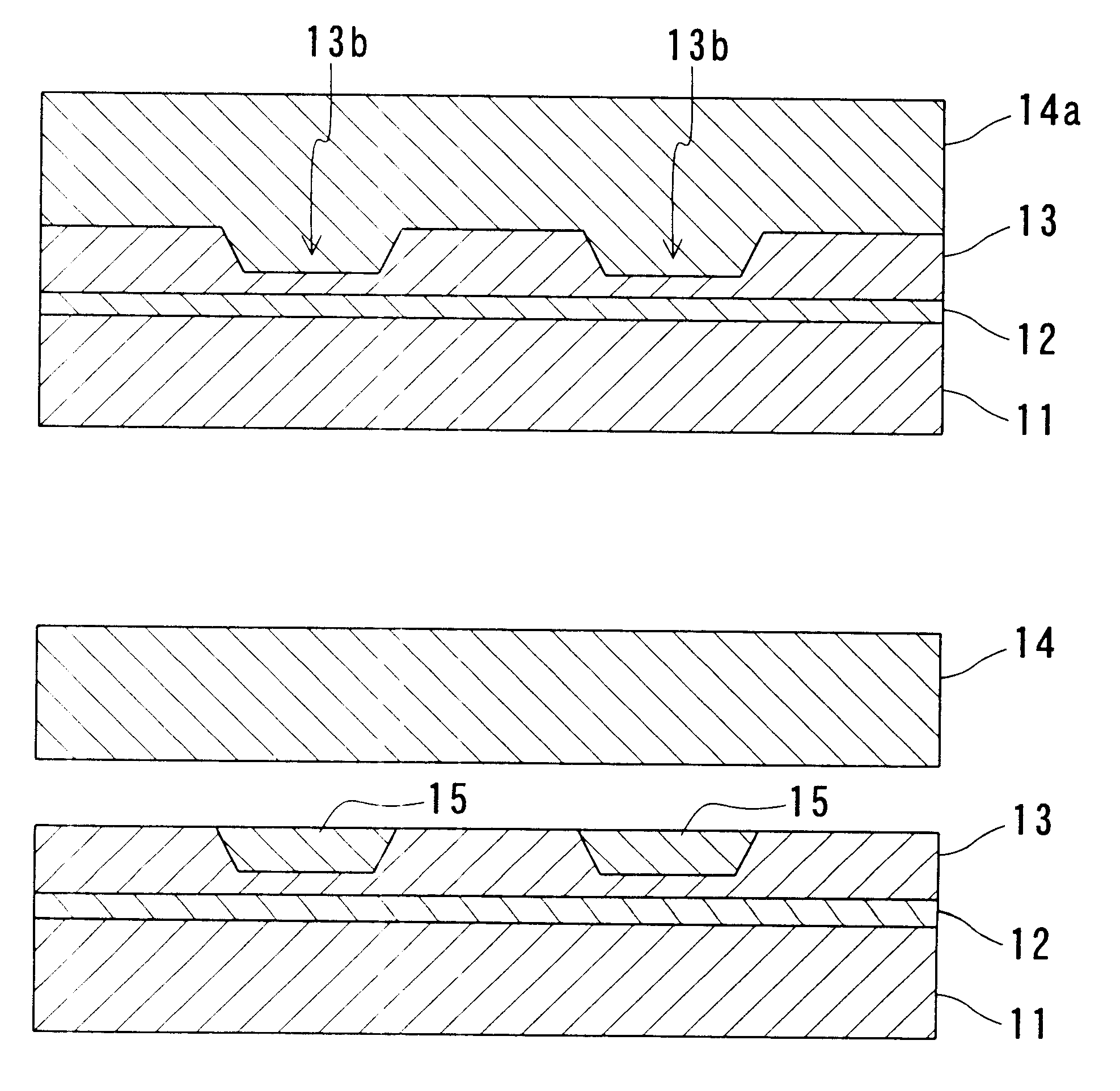Method for producing a group III nitride compound semiconductor substrate
- Summary
- Abstract
- Description
- Claims
- Application Information
AI Technical Summary
Problems solved by technology
Method used
Image
Examples
example 2
In Example 2, another example where a III-N semiconductor substrate was produced by the method of the present invention will be described. The method of Example 2 is different from that of Example 1 only in the method for cooling the substrate. Therefore, a duplicated description will be omitted.
The processes shown in FIGS. 4A to 4C were performed, and the GaN film 45a (thickness of 200 .mu.m) was formed on the Al.sub.0.1 Ga.sub.0.9 N layer 44 by causing crystal growth. Thereafter, the temperature of the wafer was reduced to room temperature by natural cooling for 20 minutes in the HVPE apparatus filled with a nitrogen atmosphere. Then, the temperature of the wafer was raised to 1000.degree. C. over 30 minutes in the HVPE apparatus filled with a nitrogen atmosphere. The heat cycle of cooling to room temperature after heating to 1000.degree. C. was repeated 5 times. Consequently, the GaN film 45a was separated from the Al.sub.0.1 Ga.sub.0.9 N layer 44, so that a GaN substrate 45 was ...
example 3
In Example 3, another example where a III-N semiconductor substrate was produced by the method of the present invention will be described. The method of Example 3 is different from that of Example 1 only in the method for cooling the substrate. Therefore, a duplicated description will be omitted.
The processes shown in FIGS. 4A to 4C were performed, and the GaN film 45a (thickness of 200 .mu.m) was formed on the Al.sub.0.1 Ga.sub.0.9 N layer 44 by causing crystal growth. Then, immediately after the GaN film 45a was formed by causing crystal growth, the substrate heater 58 was slid and nitrogen gas was sprayed to the wafer so as to cool the wafer rapidly (within 3 min). In this manner, the temperature of the wafer was reduced to room temperature. The GaN film 45a was separated by this cooling by nitrogen gas, so that a GaN substrate 45 was obtained. Then, the obtained GaN substrate 45 was removed from the HVPE apparatus.
The sliding of the substrate heater 58 was carried out to avoid d...
example 4
In Example 4, another example where a III-N semiconductor substrate was produced by the method of the present invention will be described with reference to FIG. 7. The method of Example 4 includes a process for forming an insulating film between the first semiconductor film and the second semiconductor film. The same description as in Example 1 will be omitted.
First, a (0001) plane sapphire substrate 41 (a diameter of 2 inches and a thickness of 300 .mu.m) was prepared and was subjected to washing, etching, and thermal cleaning in the same manner as in Example 1. Then, in the same manner as in Example 1, a GaN buffer layer 42 (a thickness of 50 nm), a GaN layer 43 (a thickness of 1 .mu.m) and an Al.sub.0.1 Ga.sub.0.9 N layer 44a (a thickness of 1 .mu.m) were formed sequentially in this order on the sapphire substrate 41 (FIG. 7A).
Next, the sapphire substrate 41 (hereinafter, also referred to as a wafer) provided with the Al.sub.0.1 Ga.sub.0.9 N layer 44a was placed in an atmospheric...
PUM
 Login to View More
Login to View More Abstract
Description
Claims
Application Information
 Login to View More
Login to View More - R&D
- Intellectual Property
- Life Sciences
- Materials
- Tech Scout
- Unparalleled Data Quality
- Higher Quality Content
- 60% Fewer Hallucinations
Browse by: Latest US Patents, China's latest patents, Technical Efficacy Thesaurus, Application Domain, Technology Topic, Popular Technical Reports.
© 2025 PatSnap. All rights reserved.Legal|Privacy policy|Modern Slavery Act Transparency Statement|Sitemap|About US| Contact US: help@patsnap.com



